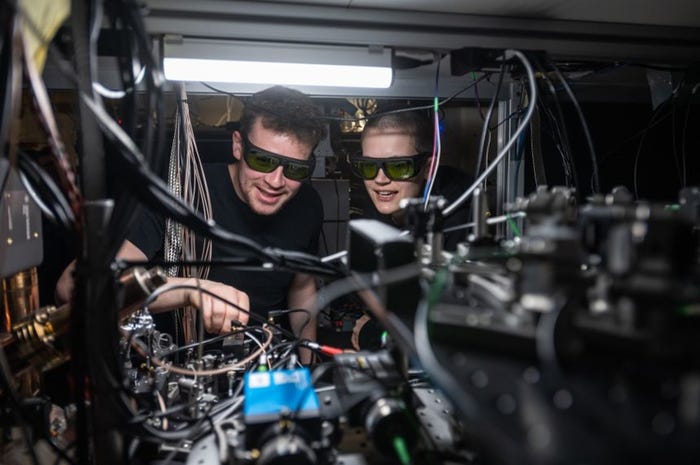
Connects decision-makers and solutions creators to what's next in quantum computing
Quantum Computing Promises to Accelerate Aerospace Product DevelopmentQuantum Computing Promises to Accelerate Aerospace Product Development
First quantum applications set to impact industry before full error correction is achieved
October 8, 2024

The aerospace industry has four main use cases for quantum computing: Aircraft simulation, topology optimization design, accelerated materials development and machine learning for advanced manufacturing.
These promise to speed new aerospace product development even before advances in architecture deliver true quantum error correction (QEC), which is forecast for 2029, according to a new IBM report.
Aircraft and spacecraft depend on a complex interplay of high-tech components and systems to deliver the effectiveness and safety required. Quantum computing is particularly well-suited to solving these combinatorial problems and is expected to outperform classical systems alone soon.
IBM’s report identifies four main use cases for quantum computing in the aerospace industry:
Aircraft Simulation With Computational Fluid Dynamics and Finite Element Analysis
The design-manufacture-test cycle for aerospace components is an iterative process that can take months or years. Computational fluid dynamics (CFD) and finite element analysis (FEA) applied early in the design process can reduce the number of development iterations required.
Quantum algorithms can accelerate CFD and FEA computations and may make it possible to accurately simulate multiple, high-fidelity designs against both the performance requirements for the item and its inherent manufacturability.
Topology Optimization Design
Topology refers to the outside shape of an aircraft. In commercial aircraft, optimizing topology design reduces fuel consumption, costs and carbon emissions. Designing for advanced technologies including hypersonic flight, low observability and remotely piloted systems adds further complexity, challenging classical systems.
Quantum computing can take more simultaneous simulation and optimization factors into account simultaneously accelerating the design process for more efficient, higher-performance aircraft and spacecraft.
Accelerated Materials Development
Novel materials can offer safety and weight advantages for aircraft but must undergo a strict testing process under real-world conditions before they can be rolled moved into production. Introducing carbon fiber composites to the Boeing 787 aircraft took the company nine years and cost $5.5 billion.
Quantum could help investigate, test and develop aerospace materials with advanced capabilities more rapidly and at lower cost.
Machine Learning for Manufacturability and Quality Control
Aerospace components undergo some of the most rigorous quality control in any industry. Quantum computing could enhance machine learning and optimize the pattern recognition algorithms used to inspect aerospace components to ensure that parts coming off the line comply with the original design.
You May Also Like




